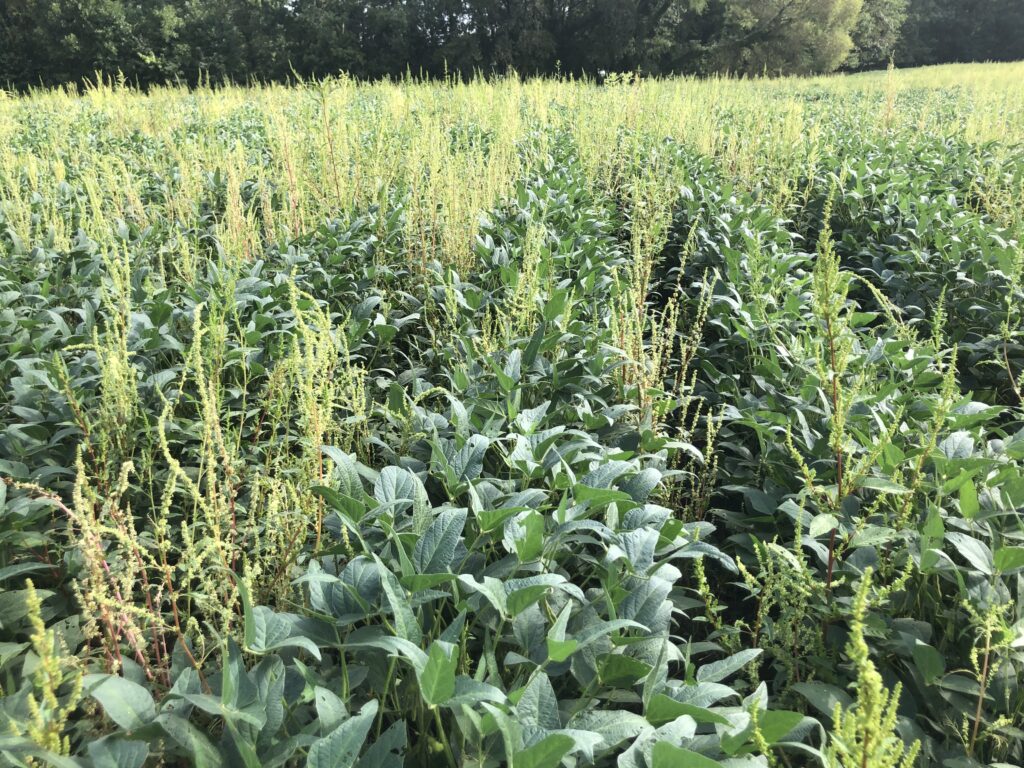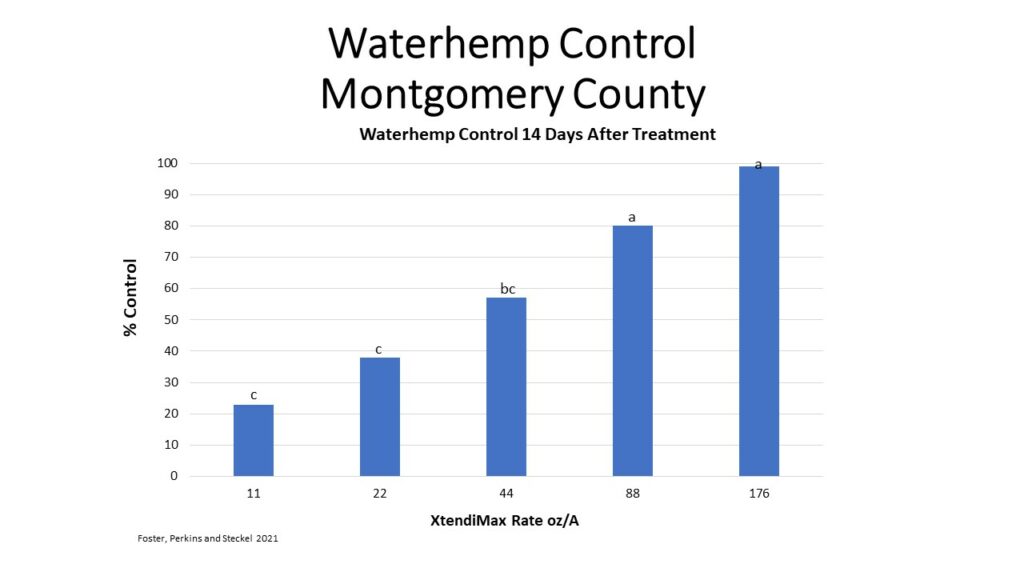
For the past several weeks we are getting reports of waterhemp escaping dicamba application/s from retailers and consultants scouting fields in Montgomery and Macon counties. As one retailer so aptly described it today “combines have spread it and we are fighting it all over the county now”.
These reports are not a surprise. As far back as 2019 and 2020, we visited fields where multiple dicamba applications failed to control waterhemp in fields along the Cumberland River (Picture 1). In 2021, we put out a field trial in Montgomery county on a suspect dicamba-resistant waterhemp population and found control lacking with rates of 22 and 44 ozs/A of XtendiMax (Figure 1).
We then sent seed from waterhemp that escaped dicamba in that test to Purdue University for greenhouse testing to evaluate if our field results were due to the evolution of dicamba resistance. In short, their preliminary findings would confirm that this waterhemp population was indeed dicamba resistant. In fact, it was over 9-fold resistant to dicamba. In other words, more than 88 ozs of XtendiMax was required to get 50% control of this population in the greenhouse.
The folks at Purdue also tested this population for resistance to other herbicides. Fortunately, there is some good news here. Though this waterhemp population was resistant to dicamba it was readily controlled with 2,4-D. Moreover, Liberty still provided good control. From a corn perspective, atrazine and mesotrione also provided good control.
In summary, judging from these data, dicamba can no longer be thought of as a “waterhemp herbicide” in Montgomery and Macon counties and probably Sumner and Robertson counties as well. Best management practices for those fields would be to rotate to corn as atrazine and mesotrione still provide good control. If the field is to go to soybean then Enlist soybeans would be the best choice so Enlist One can be used.
Figure 1.


